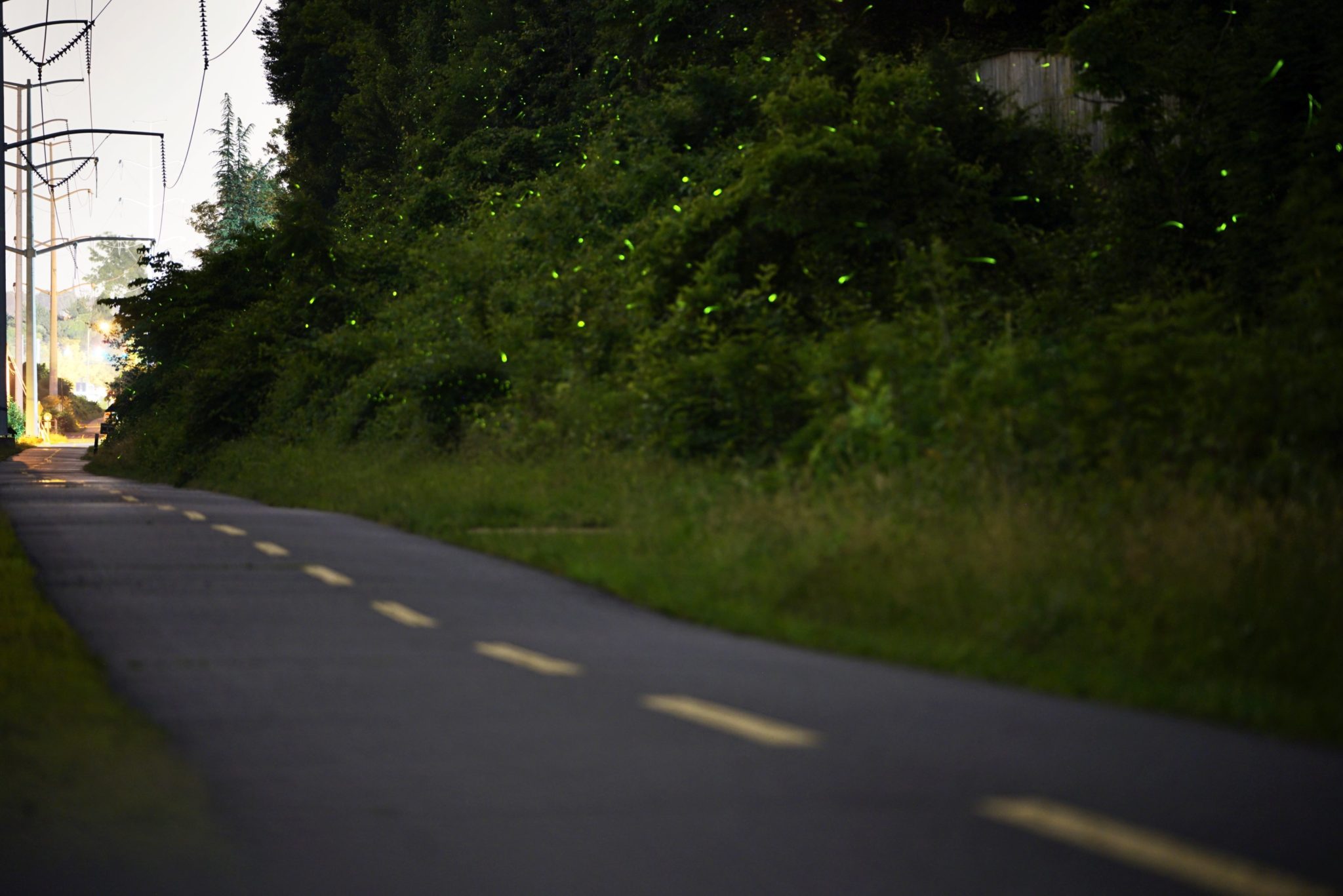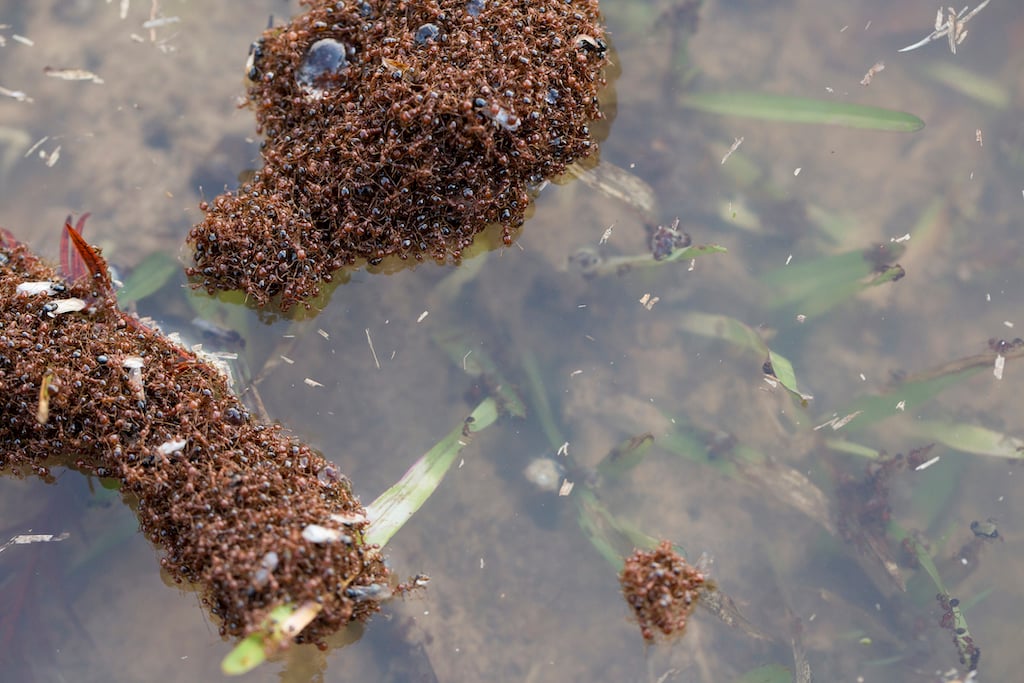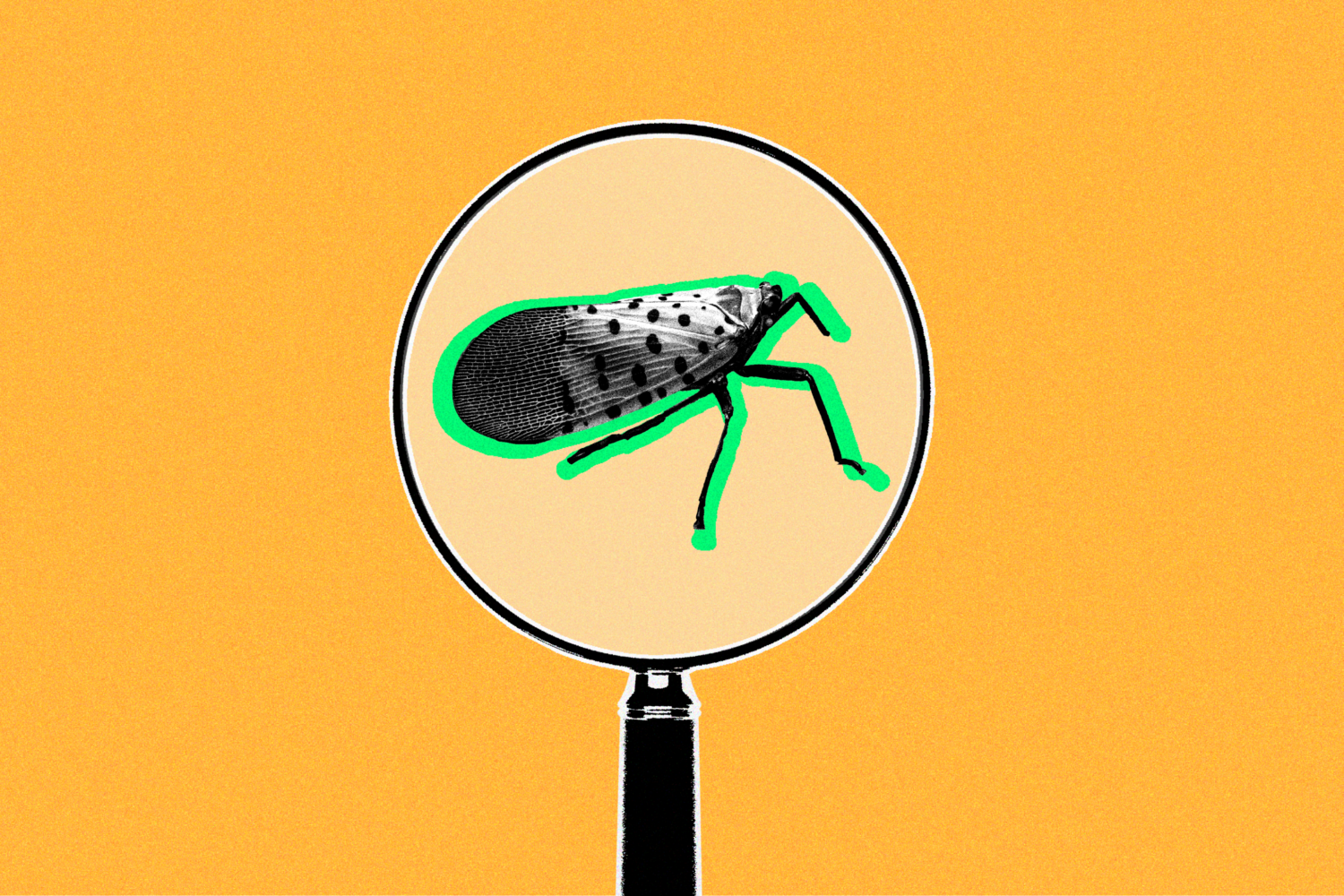If you’ve lived in the DC area for more than a summer, you’ll likely have fond memories of seeing fireflies light up the trees in the evenings or watching kids chase them with a jar to make their own living starry night. But these flashy creatures’ populations have fluctuated in the past few years—some summers they’re everywhere while other years their lights are seen less frequently.
Fireflies thrive in moist, warm environments, which is why summer in DC is the perfect place for these critters. Due to climate change, the region saw more heavy rain events and warmer temperatures this year in the early spring, which brought fireflies out earlier and for a longer period of time, says Floyd Shockley, the collections manager at the Natural History Museum’s Entomology Department. This is a potential explanation for why more lightning bugs are out now instead of a dryer year, when the ground isn’t retaining as much moisture, he says.
“Rather than having [fireflies] come out in one big pulse for about a month in the summertime, they’re coming out beginning in late spring, and running through the middle of summer so they’re spread out over a longer period of time,” Shockley says. “In the past, when springs were still cool, they had to wait until summer to get started.”
In the short-term, these fluctuations are pretty normal. But experts say the size of the firefly population is a little more unpredictable as you zoom out. Bugs overall are experiencing an “insect apocalypse” from increased use of pesticides, habitat destruction, and climate change. According to a 2019 study from Biological Conservation, over 40 percent of insect species—including fireflies—are threatened with extinction.
Lightning bugs that live in urban areas have been experiencing a decline for years, Shockley says. The use of pesticides on pests like mosquitos also impacts firefly larvae as well as other critters that they feed on. Increased development, changes in soil patters, and the destruction of natural habitats like flower beds and native plants can also affect the critters. “The urban desert we create with well-manicured lawns is terrible for fireflies,” Shockley says. “It’s tough for them to complete their lifecycle and they’re looking for snails and slugs, which are largely excluded when you have those big lawns.”
Light pollution is also a factor in the decline of some urban lightning bugs, says Michael Raupp, a professor in the Entomology Department at the University of Maryland. Aside from creating a gorgeous natural light show, fireflies glow as a way to find mates. But incandescent light makes it difficult for them to see specific flash patterns of potential mates, making bright cities a particularly difficult place to reproduce.
Though fireflies likely won’t disappear in this area anytime soon—especially because of the moist, warm atmosphere—Raupp says people should still do their part to protect these creatures, as well as other insects who are on the decline. Improving biodiversity in urban areas by filling green spaces with native plants and reducing the use of harmful pesticides can help immensely, he says. People can also turn off their porch lights in the yard or use red-wavelength lights to make it easier for fireflies to see. “When we destroy a habitat or make a habitat unfavorable for creatures to live in, it’s ‘bye bye’ to those creatures until we can change that,” Raupp says. “What we’re doing here is we’re trying to build a rich diversity of resources that support a healthy, vibrant community of animals, of insects.”
















